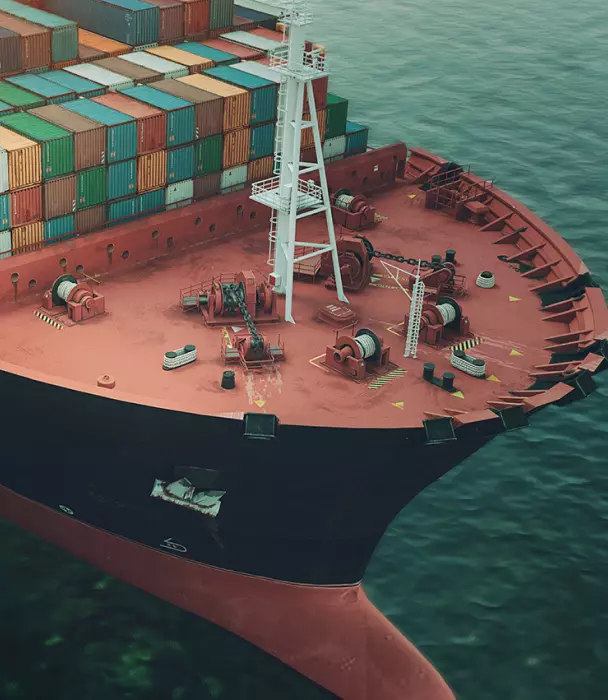Shipping and freight forwarding can be confusing, especially when you're faced with industry-specific jargon. This basic dictionary in shipping and forwarding is designed to help you grasp the essential terms that drive the industry.
1. Bill of Lading (B/L)
A bill of lading is a document issued by a carrier or their agent that acknowledges receipt of cargo for shipment. Today, bills of lading may also be used to acknowledge carriage in any type of transport- not just shipping.
The bill of lading is an important document for international trade, serving three main functions: ensuring payment to the exporter, guaranteeing that importers receive merchandise, and providing evidence in case of disputes.
In ocean shipments, two types of bills of lading are being used: 1. Original bill of lading 2. Express BL- which is also called Waybill.
Air shipments use only one type: Air Waybills (AWB).
2. Freight Forwarder
He acts as intermediary between shippers/ importers and carriers, arranging the transportation of goods from the point of origin to the final destination, while handling various aspects of the shipping process, such as customs clearance, documentation and insurance.
> If you're seeking a freight forwarder or a freight quote, register here and Instantly compare carrier rates/ send your quote request to our global network of forwarders.
3. Incoterms
The International Commercial Terms (Incoterms®) are a set of internationally agreed standards that define the responsibilities of exporters and importers in the sale of goods in international transactions, including the arrangement of shipments and the transfer of liability involved at various stages of the transaction.
The Incoterms® are published by the International Chamber of Commerce (ICC) and are accepted by governments, legal authorities, and practitioners worldwide for the interpretation of most commonly used terms in international (and domestic) trade. They are updated periodically, with the most recent version being published in 2020.
This version includes seven rules for any mode of transport:
EXW - Ex Works, FCA - Free Carrier, CPT - Carriage Paid to, CIP - Carriage and Insurance Paid To, DAP - Delivered at Place, DPU - Delivered at Place Unloaded and DDP - Delivered Duty Paid.
As well as four rules for sea and inland waterway transport:
FAS - Free Alongside Ship, FOB - Free on Board, CFR - Cost and Freight and CIF - Cost Insurance and Freight.
So whether you're looking for guidance on how to document, insure or transport goods, the Incoterms rules can help.
A visual comparison of the different Incoterms
4. FOB (Free On Board)
FOB (Free on Board) is an Incoterm that places the responsibility on the seller to clear the goods for export, transport them to the designated ocean vessel, and load them on board. The transfer of cost and risk occurs once the goods have passed the ship’s rail. It's important to note that FOB is best suited for shipments where goods move directly from the seller’s premises to the vessel for ocean transport. For LCL (Less than Container Load) and other containerized shipments that are delivered to a carrier at a Container Freight Station (CFS) or Container Yard, FCA (Free Carrier) is a more appropriate Incoterm.
5. Container Freight Station (CFS)
At a CFS, goods from multiple shippers are grouped together into containers for LCL (Less than Container Load) shipments, or containers are unpacked for delivery to individual consignees. The CFS also handles processes like customs inspections, documentation, and temporary storage. It plays a key role in managing efficient logistics for shipments that do not fill a full container.
6. TEU (Twenty-foot Equivalent Unit)
TEU is based on the dimensions of a shipping container whose internal dimensions measure around 20 feet long, 8 feet wide, and 8 feet tall.
TEU is a standard unit used to measure the capacity of container ships. It is also used as a measuring tool by shipping lines and terminals when calculating load capacities on individual vessels.
7. Demurrage
Demurrage refers to a charge that is incurred when the container remains within the terminal longer than the agreed-upon free time.
8. Customs Broker
The Customs broker acts as a liaison between the importer/exporter and government authorities, such as customs officials, to ensure that all legal requirements for the shipment of goods are met. The customs broker handles the documentation relevant to the customs process and ensures that all taxes, duties, and fees are paid correctly. They also provide guidance on trade agreements, tariff classifications, and other relevant matters that can affect the cost and logistics of international trade.
Customs brokers may work independently or as part of a larger customs brokerage firm or a Freight forwarding agency and they are typically licensed by government agencies.
9. Port of Loading (POL)
The port where the cargo is loaded onto a vessel for shipment is called the Port of Loading. This is often where the export process begins.
10. Port of Discharge (POD)
The Port of Discharge is where the cargo is unloaded from the vessel. It is often the final destination or where the goods are transferred to another mode of transportation for delivery to the buyer.
>>> While these key terms are a great starting point, there’s always more to learn in the world of logistics. For a deeper dive into shipping and forwarding terminology, visit our Freight Dictionary, where you'll find a comprehensive list of terms. Additionally, explore more articles on our blog to stay updated with the basics and the latest in freight forwarding.


